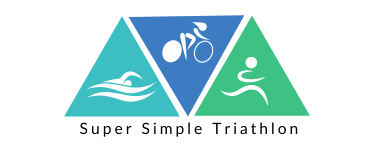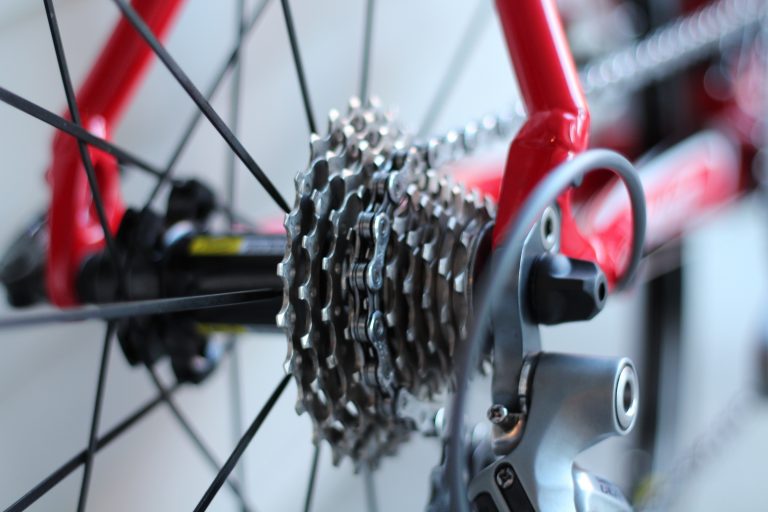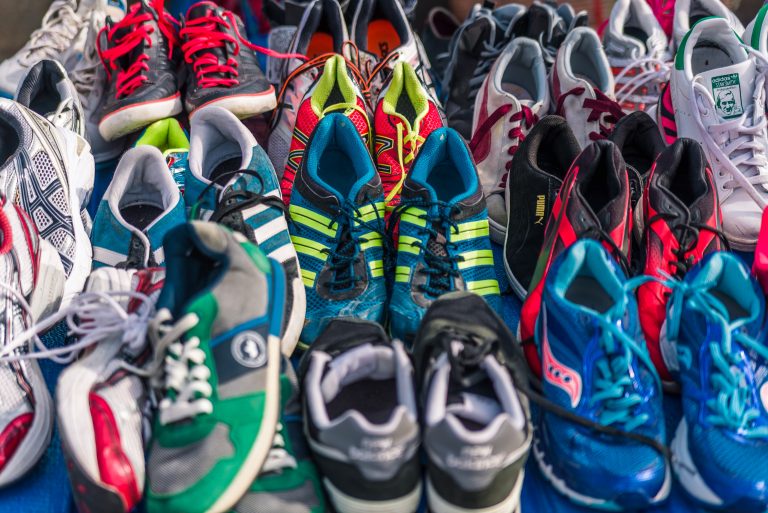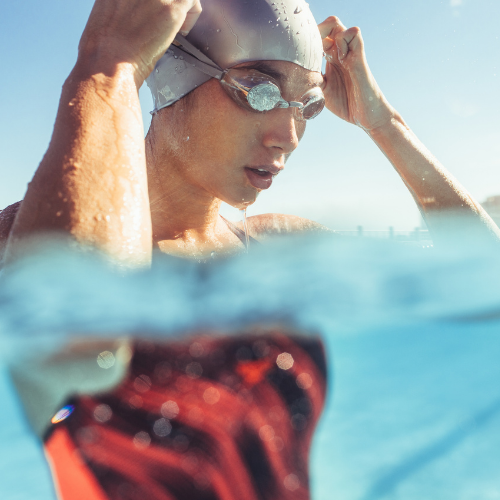The Embarrassed Girl’s Guide to Triathlon
Questions range from what to wear, how do you eat, and what to do if you get a flat tire.

There is no such thing as a dumb question.
Questions you are afraid to ask
Triathlon may have three sports of concentration, but there is much more that goes into training or event preparation. Whether you have watched triathlon on TV or have watched live, you’ve probably had questions cross your mind you may have been afraid to ask.
The questions below are the most common questions I get from women inquiring about triathlon. Some are asked in hush tones because the individual is shy about the subject. Trust me, there are no dumb questions. Let’s start with the simplest ones.
Where do you change clothes and put all your stuff between sports?
The transition area is where you store your bike and other essentials between each sport. Racks will be set up for you to hang your bike and set out your race essentials. The transition between the swim and bike is called T1, while the transition between bike and run is called, you guessed it, T2. Usually these are in the same corral, but there are some longer distance races that will have transitions in multiple places. For example, a race may have a point-to-point swim, instead of entering and exiting in the same general vicinity. Or the bike and run end in different places completely.
My experience has been with both scenarios. Racing in an event with multiple transition areas takes some logistical planning, but the race director will provide you with all the information you need. Typically, race personnel will have trucks to move your gear bags to the finish line in a special area for pick up when you are done with your race. Having a packing list is crucial for events like this so you are ready for anything. Public nudity is not allowed at any race venue, so if you are uncomfortable with the kit option, you may have to use a port-a-potty or bathroom if one is available at your race.
Practicing transition has also been known as discipline #4. Rest being #5. Oh yeah, and Nutrition is #6! And you thought it was just about the three sports. Read more on mastering transitions.
What the heck do I wear?
The name of the outfit athletes wear in triathlon is called a triathlon suit or tri-kit. A kit comes in either a one piece or two-piece option. Typically, you will find them in sleeveless or short sleeve versions. There are many styles, colors and designs to choose from in various price ranges. They are form fitting and dry quickly and are designed to wear for all three sports. The shorts have padded protection to keep saddle soreness at bay, while the top has back pockets to store extra stuff you might need while you are training or racing. The bottom is designed to fit close to the skin for comfort in the seat during your ride. Many of the newer top designs do not come with a bra insert/shelf bra, so you will have to wear a sports bra. That being said, if your girls are a little bigger, it is recommended to invest in a good sports bra. You want the girls pinned down so you can get to the finish line without fuss or worry. Be sure to wet test to make sure the bra holds up to your standards and doesn’t chaffe.
I have used both types of kits, and personally like the two-piece option. It comes down to personal preference. If you are not investing in a kit just yet, wearing a bathing suit and sliding your shorts and t-shirt over your suit is just fine. If you decide you need to do a full clothing change, keep in mind there is no public nudity allowed, so you may need to find a cramped and smelly port-a-potty, as most venues may not have a bathroom building available to athletes. Remember, race in what you train in. You don’t want any surprises on race day.
You may also opt to try The Undress, the most versatile dress in the world. I have at least 5 of these. And while I have never used them during a race, it was designed for women to get dressed or undressed in public without ever getting naked. Truly genius.
Having a kit is not necessary, but they are nice to have. Which brings me to the next question.
How do you keep from chaffing “down there”?
Saddle soreness and chaffing are very real things. If there is just one item you can afford to invest, I suggest padded bike shorts. Especially if you are riding longer distances. Your pubic bone and bum will thank you.
20 years ago, I rode in a 6-day, 400-mile bike event for charity. By the 4th day, my friend (who was wearing bike shorts) ended up with severe chaffing that caused blisters. By the time she decided to use an anti-chaff cream, it was too late. She was miserable, and I felt terrible for her. She could hardly walk, let alone sit.
I will always recommend some kind of chamois cream to use to keep chaffing at bay. My personal favorite is Chamois Butt’r Original Anti-Chafe Cream. I also use Body Glide for neck, lower armpit/rib area, and ankles. It is in a deodorant tube and glides on nicely. You can use either one of them anywhere you experience chaffing. They are non-greasy and wash out easily with soap and water. When I am doing longer distance rides, I carry a small zip lock baggie with extra chamois cream. You never know when or where chaffing will start, so it is good to have on hand without carrying the whole tube.
Wearing a wet bathing suit under shorts or wearing a new shirt or tank/kit can also create an opportunity for chaffing. Apply in all the places you believe may cause discomfort. I usually apply to my neck near the zipper of my wetsuit, as well as around the armpit area to keep clothes/seams from rubbing my skin raw. The old saying is to apply liberally and often.
Where/How do you go to the bathroom?
Triathlon is a dirty sport. I am not going to sugar coat it. We spit, we throw snot-rockets, we pee in our wetsuits. There, I said it.
Do the best you can to make sure you have eliminated everything you can from your insides before the start of a race. Trust me, you will see long lines of athletes with pre-race jitters lined up in droves in front of a portable john. You may be one of them. It’s ok. It’s natural. Just get it all out the best you can.
We drink lots of fluids to stay hydrated but it’s inevitable all that liquid is bound to come out. And when the urge hits sometimes you just can’t hold it. Depending on where you are when you have to go will dictate.
When you are training you most likely know of every corner with a gas station, so it is easy to make a pit stop. Depending on the distance and location of your race changes things. Most venues have port-o-johns in transition or set up along the route. Typically, they are at or near aid-stations.
When the urge is too much, you just go. If I am in my wetsuit, yes, I will go. I know it sounds completely gross, but the warm liquid will create a barrier to keep you warm. And to be honest, you are most likely getting in a dirty lake anyway. It will just wash off.
If you have to pee on the bike, and you just can’t make it to an aid station, find a piece of grass on the side of the road, sit down and just go through your shorts or kit. When you have finished, move on. If you absolutely need to, squirt a little water from your water bottle onto your parts. It will dry. You have to wash your kit and take a shower after your race anyway.
Several years ago, I did a 70.3 distance in Puerto Rico. About a mile from the finish line was the last aid station, and I had to go so bad, but there was no port-a-potty. The volunteer asked me if she could get me anything, and I told her I had to go to the bathroom. She said, “Just go!” I stood there and relieved myself in the middle of the sidewalk. My feet and socks were already wet from sweat and the various water sprayers and hoses on the course. She promptly threw water on my crotch and we both laughed. I had to throw away those shoes because I couldn’t get the smell out of them. Lesson learned.
Some individuals have learned to pee while standing up on the bike. The downside is the risk of spraying the person behind you. If you attempt this act, practice it, and make sure no one is behind you.
Having gastrointestinal issues during a race can be a bit more overwhelming. Do your best to get to the nearest aid station or watch for a random port-a-potty. Don’t let this issue get the best of you. If this is an issue you really need more information about, ask the race director where bathrooms are located on the course.
What do you do when you get a flat tire?
Never consider a flat tire to be the end of your race. When you practice how to change a tire, you will be on your way quickly and confidently.
This video below was a Facebook live during a training ride. You’ll see you don’t need to be frustrated when you get a flat. You adjust and keep moving.
- Start by removing the tire from the frame.
- Place your bike in a position that won’t damage your derailleur.
- Slide a tire lever in between the tire and wheel, and hook onto a spoke.
- Slide another lever in the same way and slide it along the rim of the wheel to remove the tire. The tire will stay on the rim. We are actually removing the inner tube.
- Remove the inner tube.
- Please discard in the nearest trash can or take home and find the hole to patch. Don’t leave it on the side of the road as trash.
- Gently fill another inner tube with a small amount of air. This will help the tube stay in place while you are pressing it into position.
- Make sure the wheel is clear of debris, by sliding your fingers across the inside of the rim.
- Slide the tube stem through its hole and glide the tube under the tire and into position.
- Once in position, use your thumbs to press the tire back into the wheel rim.
- Finish adding any hardware (screw/tube cap) and fill with air.
- Put wheel back on your bike and be on your merry way.
Yes, I finished that 40-mile ride. I rode the six miles home and added more air. 😊
What do you eat when your are training or racing?
Training and racing burn calories. And nutrition is an important part of your training in order to keep going without bonking or cramping. Every individual is different with food or supplements they like for training and racing. I have personally tried so many different types of gels, powders and gummies, but they all make my mouth feel scummy and acidic. My absolute favorite fuel is Tailwind Nutrition. They have a grab and go variety pack you can try to see which one you like the most, then you can order that flavor separately. I like them all. They are lightly flavored and don’t leave you with digestive issues. Tailwind is family owned, so it’s nice to support small business, too.
During my swim workouts, I have a bottle of Tailwind on the deck just in case I need it. I carry 3 bottles on my bike. Two have water, one has Tailwind. I also carry and extra packet depending on distance. GU Energy Gel is in my stash if I need it just in case. Test them out to see what you like. I also carry both items for my training runs as well. They are easy to pack in a pocket.
On my bike rides, I will sometimes carry a tortilla with almond butter, maple syrup and Himalayan salt rolled up in a baggie. Be warned and prepared. They can be messy and sticky, but they taste so good.
It’s important not to try anything new on race day. You don’t want any surprises. That’s what training is for. Test out fuel to see what works and what doesn’t. When you are done training or racing, eat whole natural foods to replenish and recover successfully.
These questions are just a few I have I gotten over the years. What other questions do you have? I would love to hear from you. Reach out to me or leave a question on our Facebook page.
Amazon Associate Disclosure. We are a participant in the Amazon Series LLC Associates Program, an affiliate advertising program designed to provide a means to us to earn advertising fees by linking to Amazon.com and affiliated websites.




